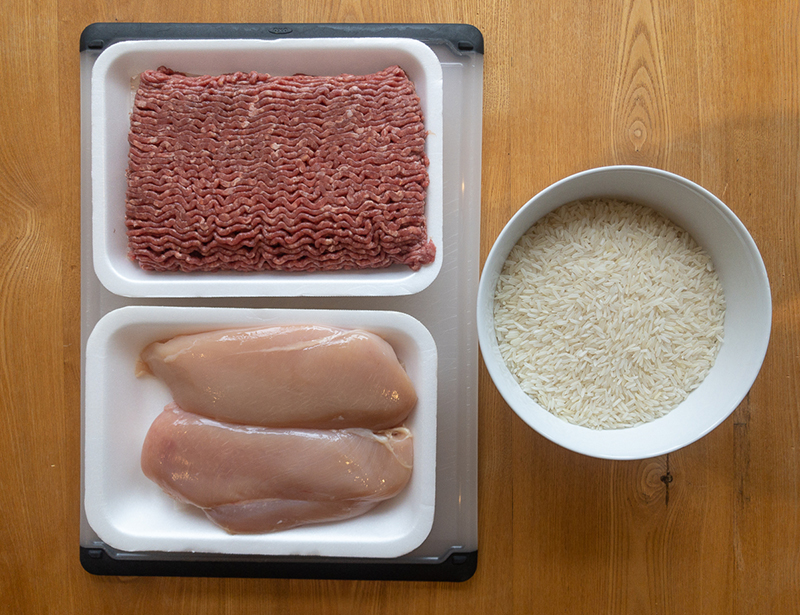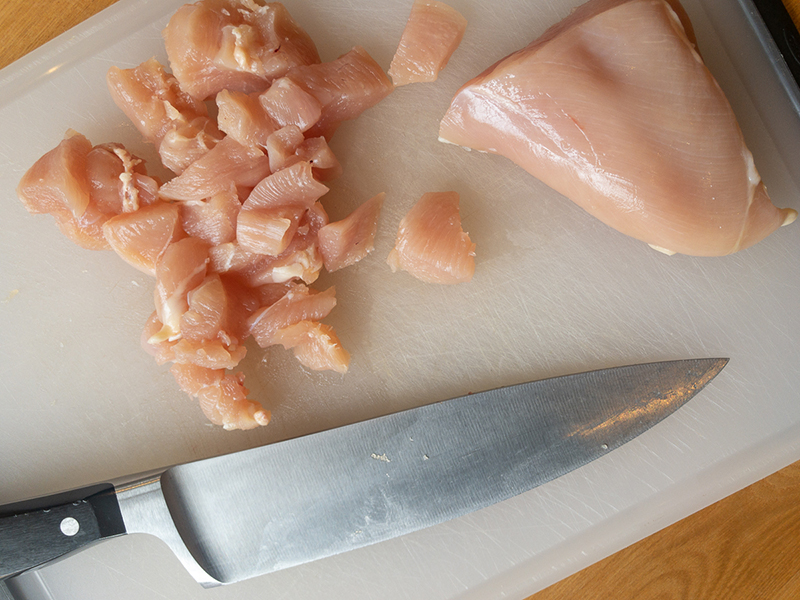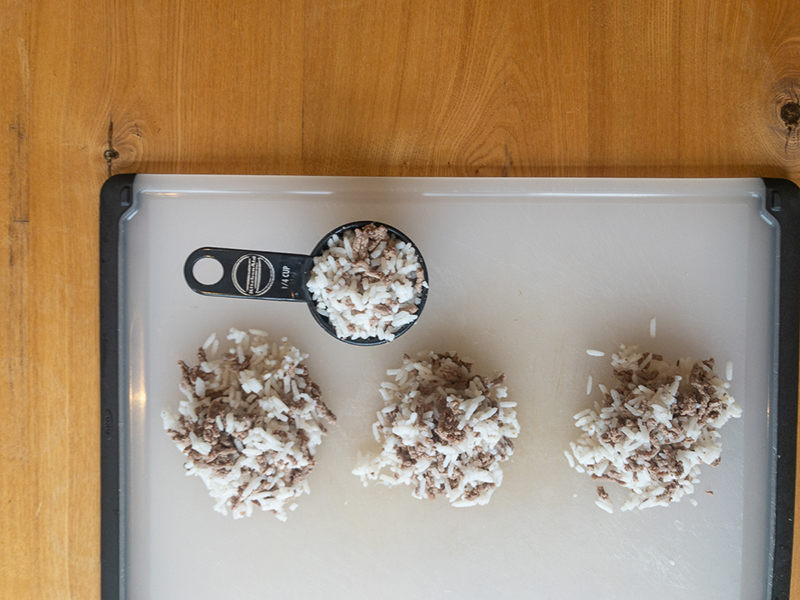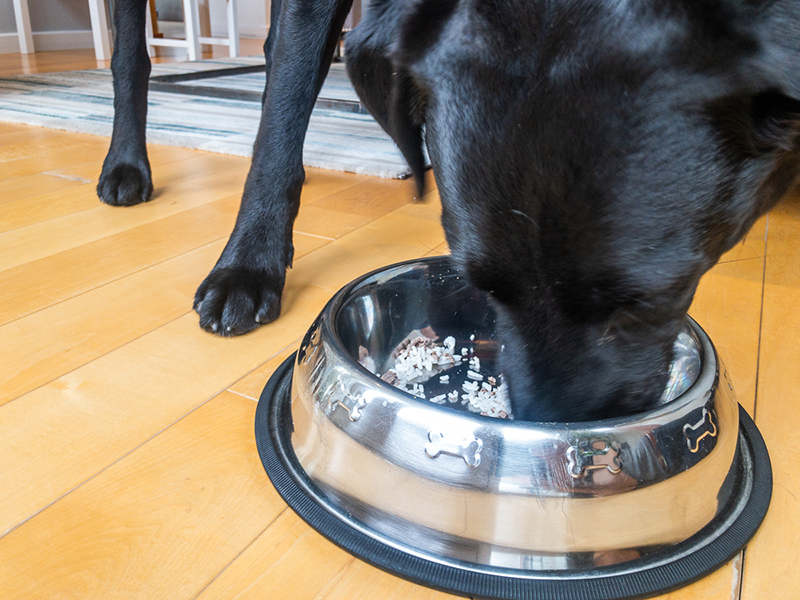How Much Beef and Rice to Feed Dog
Share this post
What is a "bland" diet?
The "bland" diet is a home-remedy that veterinarians have recommending to clients for ages, and it's meant to help dogs who are experiencing signs of stomach upset (diarrhea and/or mild vomiting). We've put the term "bland" in quotations here since it's not a well-defined term, yet it seems to be the one that is most commonly used. You could easily call it a "gastro-intestinal friendly" diet instead, but that's a bit of a mouthful.
There are many good commercially produced gastro-intestinal friendly diets out there, but what we are referring to in this article is the home-cooked version. While there are pros and cons to each approach, there is a place for the home-cooked version, especially if you're in a pinch and can't get to your local vet clinic - if you're a Treatwell Pet Care member with a mobile vet like us, keep in mind we're always happy to deliver 🙂
The diet consists of a single starch (usually white rice) and a single source of lean protein. Most commonly people use extra-lean ground beef or chopped chicken breast, but some people substitute things like ground turkey or even low-fat cottage cheese. Please keep reading for our recipe below.

What a bland diet is not.
- This type of diet is not supported by any kind of scientific evidence, so it would be hard to prove whether or not it really works. That being said, lots of people (both pet-parents and veterinarians) use this approach and feel it does help. Part of this could simply be because queasy dogs find the diet very appealing, and are more likely to eat it than their regular kibble when not feeling well.
- The bland diet is not well balanced, and is not appropriate for long term feeding. It's very much meant as a temporary solution (usually 2-4 days), and pets should be transitioned back to a well balance diet once gastro-intestinal signs have resolved.
- This diet is not recommended for pets that have chronic (e.g. long term or recurring) diarrhea or vomiting. Those pets may have underlying problems that are best addressed through a discussion with your veterinarian.
- This diet it not ideal for dogs with true food allergies, or inflammatory bowel disease, although there may be a work-around for this if you know what your dog is allergic to and can chose an appropriate protein source.
- We generally don't recommend this or similar diets for cats. Their nutritional needs are more complex, and they're also less prone to diarrhea and vomiting without a more serious underlying cause.

When is it appropriate to use this diet?
This type of diet is only recommended in cases of mild stomach upset. Typically this is the type of thing that can result from a culinary misadventure, like eating a dead mouse off the side of the road, or some mild cases of infectious gastroenteritis.
You could consider using this diet if:
- Your dog usually has normal stools, but has suddenly broken out with diarrhea
- The diarrhea hasn't persisted for more than 2-3 days already
- Your dog is still bright, alert and playful despite the signs of gastro-intestinal upset
- Your dog is able to keep food down and is not vomiting. Vomiting can be a sign of more severe problems, and while a single isolated episode of vomiting may not be an issue, any persistent vomiting is better addressed by talking to a veterinarian.
Bland diet recipe
Ingredients
- 1 and 1/2 cups white rice
- 400 g extra-lean ground beef or chicken breast
- You can scale this recipe as much as you like. The above measurements will make enough for 4-5 meals for a medium sized dog.
- The goal should be to maintain a ratio somewhere between 50:50 to 75:25 rice to protein.
Instructions
- Put your rice in a pot and cover with cold water. Not sure how much water to use? Try the "first knuckle" trick!
- Bring the rice and water to a boil, then turn the heat down to low and simmer with a lid on for 10-15 minutes, until all the water is absorbed.
- Prepare your protein. If you're using ground beef there's not much to do, but if you're using chicken breast or other whole cuts of meat trim off as much fat as you can and cut into bite sized cubes.
- Bring a second pot of water to a boil. Carefully add your protein, and boil for 5-10 minutes.
- When boiling the protein, any fat should rise to the top and float on the surface of the water. Once boiling is complete, pour through a colander to remove any water and fat.
- Mix your cooked rice and cooked protein together in one container and allow to cool.
- No need to season! Your pooch will love this just the way it is.
- The finished product can be stored in the fridge for several days. It's sometimes easiest to cook a large batch in advance so you can take meals out as required.

Feeding instructions
- The total daily volume to feed your dog should be roughly equivalent to the total daily volume of kibble they normally eat.
- Divide the total daily amount into at least 3 - 4 small meals over the course of the day. Small, frequent meals are easier to digest than 1 - 2 large meals.
- This diet can be started as soon as signs of gastrointestinal upset are noted, no transition required.
- If your dog's signs start to resolve within 2-3 days, you should transition your dog back to their regular kibble. This transition can usually be fairly rapid - feeding 50% bland diet and 50% regular kibble for an additional 1-2 days should do it.
- If signs of diarrhea persist for more than 2-3 days, or if repeated vomiting develops at any time you should contact your veterinarian for advice.
- Bon appetit!

Interested in becoming a Treatwell Pet Care member?
Source: https://www.treatwellpetcare.ca/bland-diet-recipe-to-help-your-dog-with-stomach-upset/
0 Response to "How Much Beef and Rice to Feed Dog"
Post a Comment